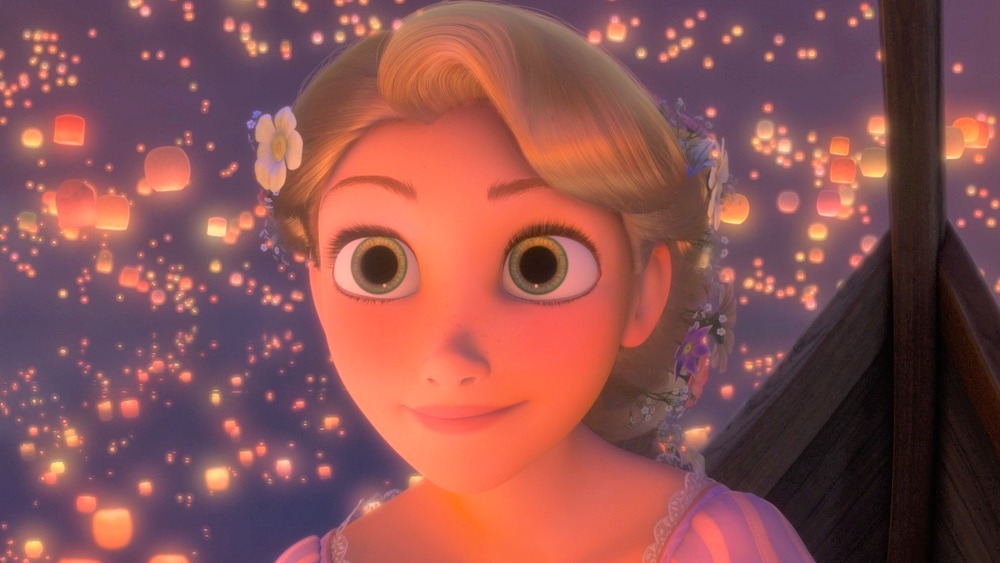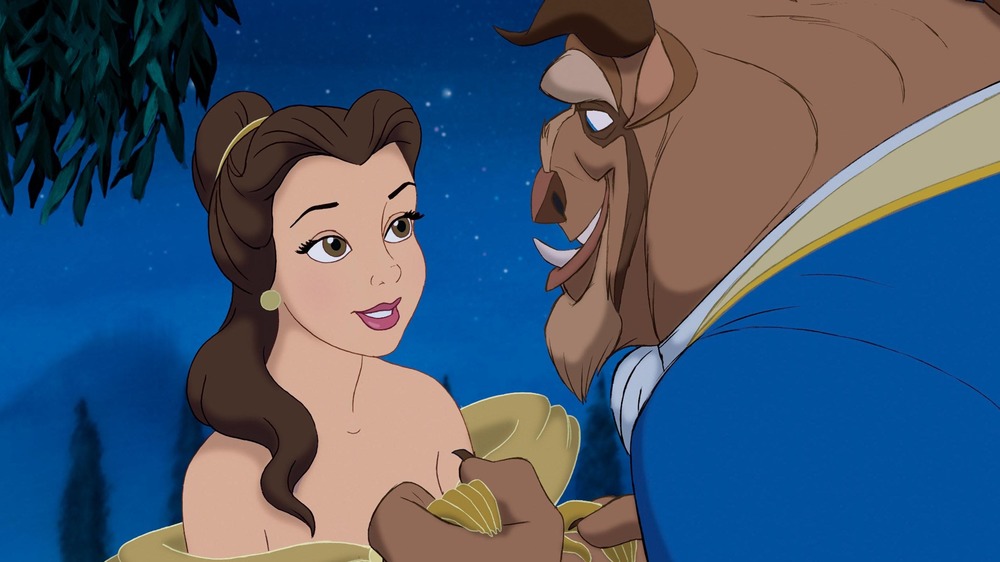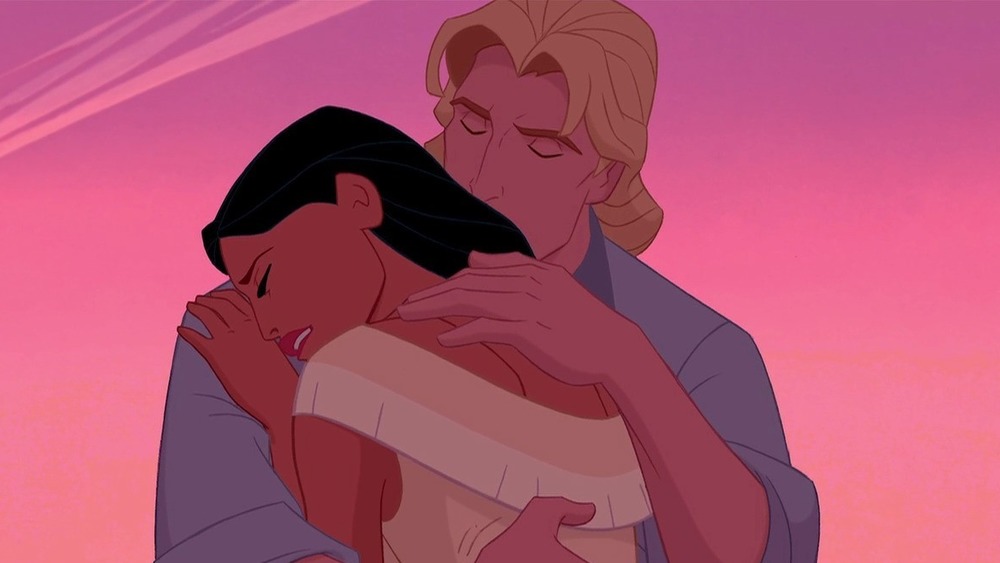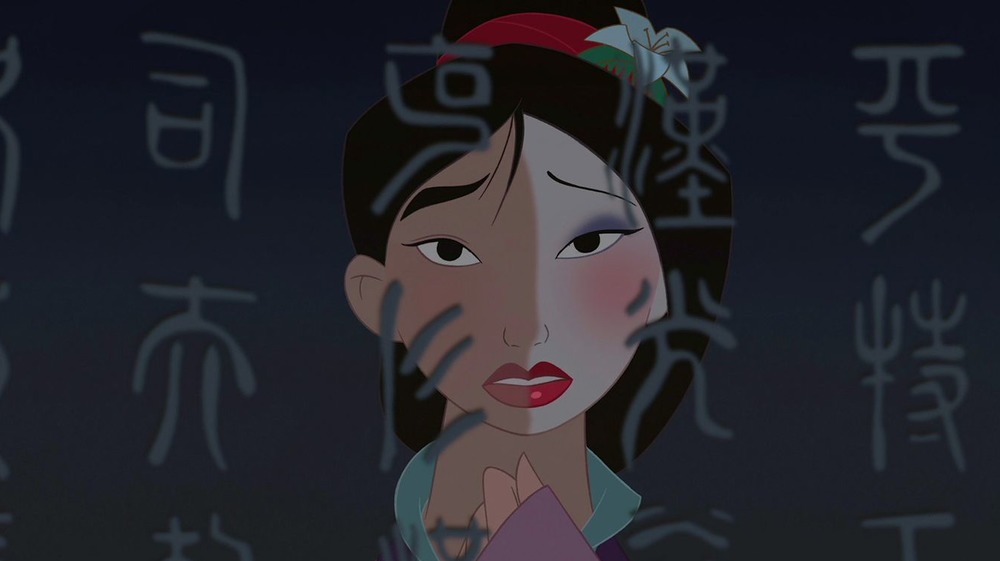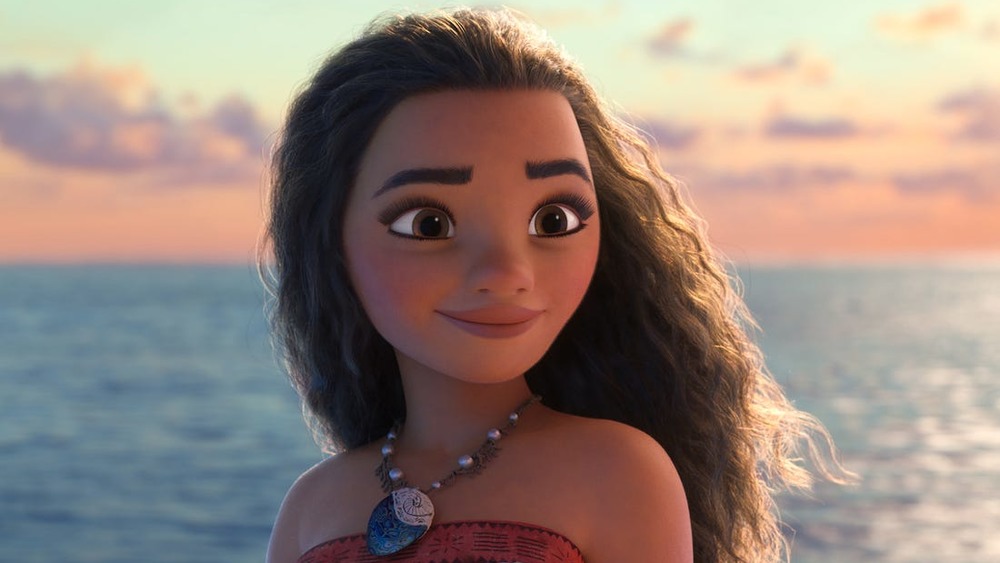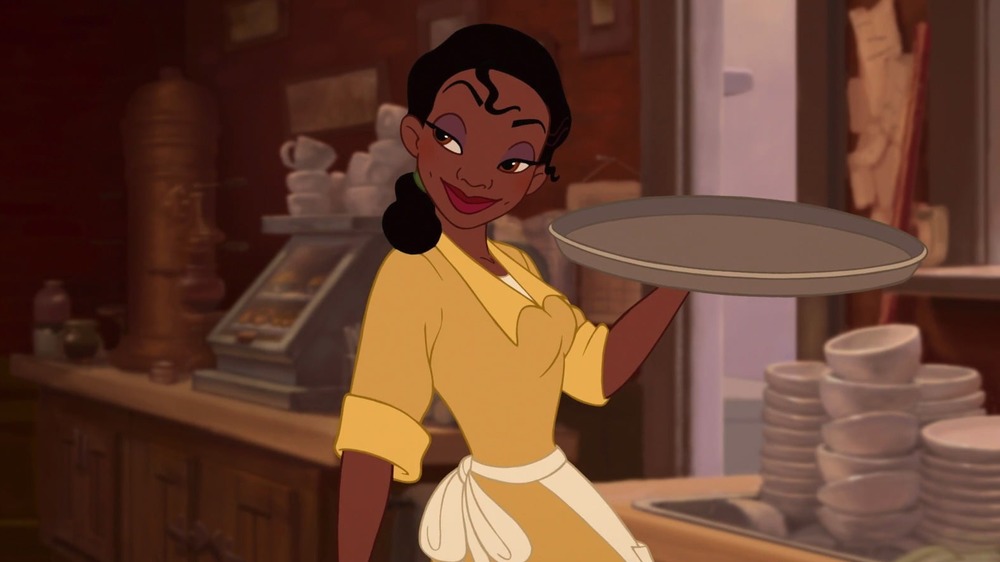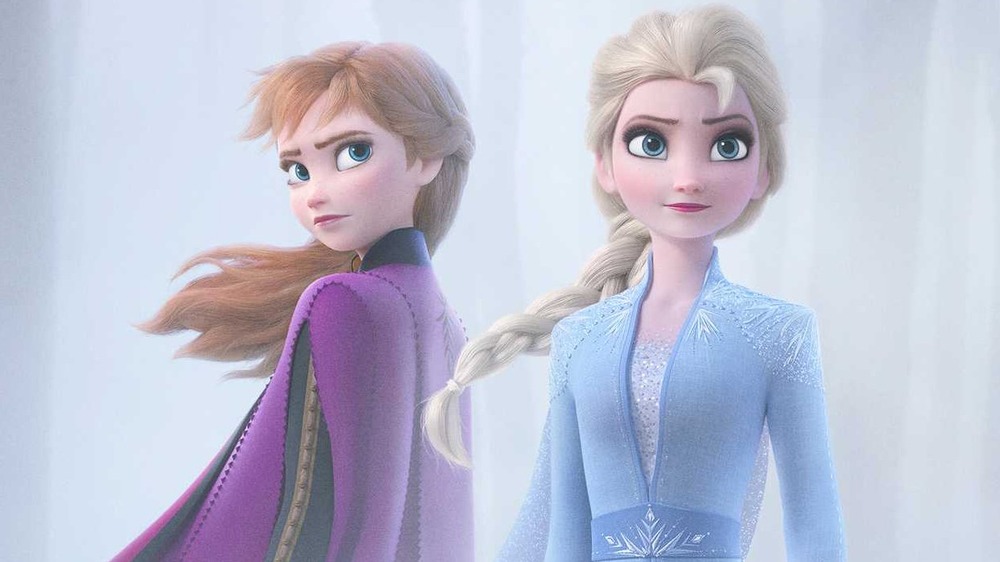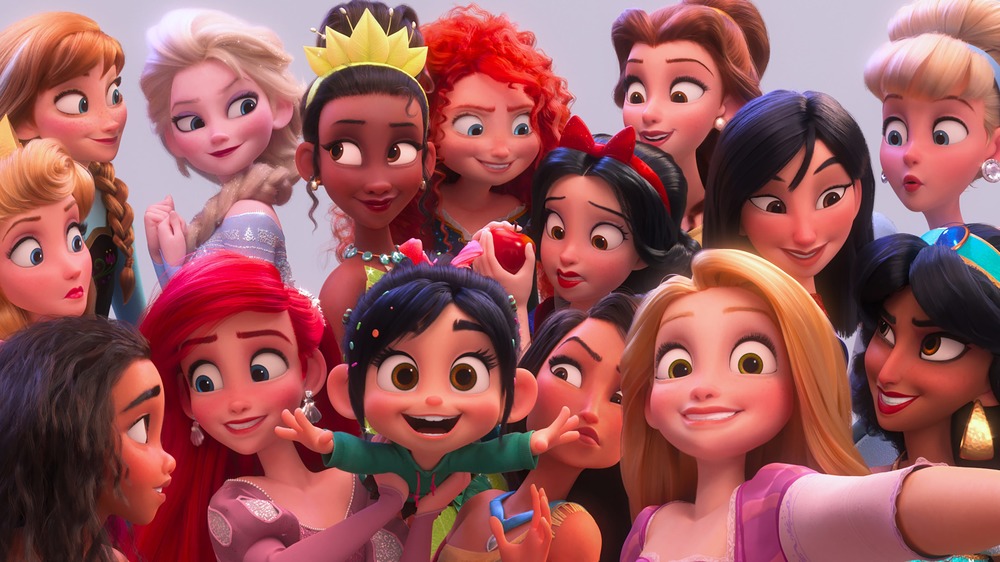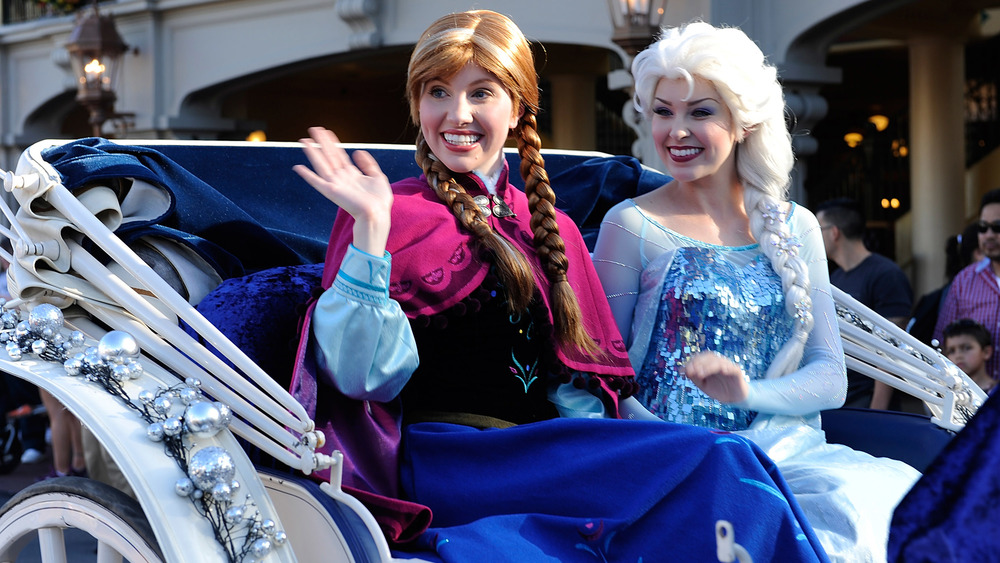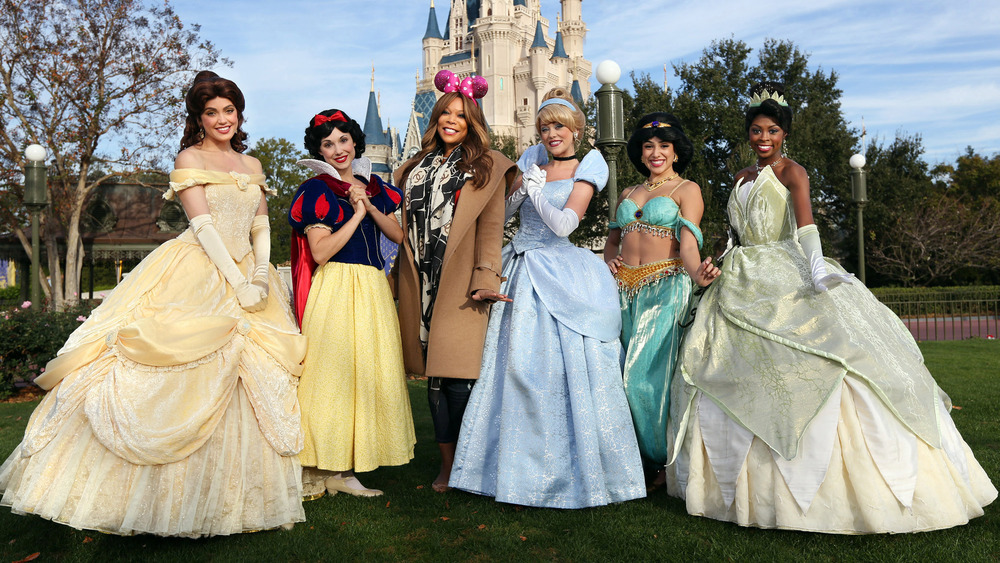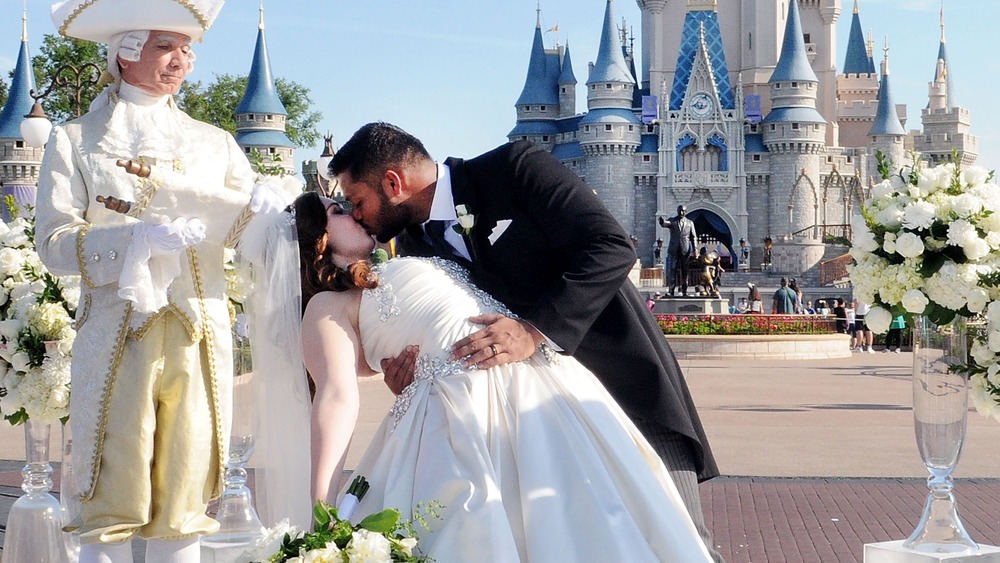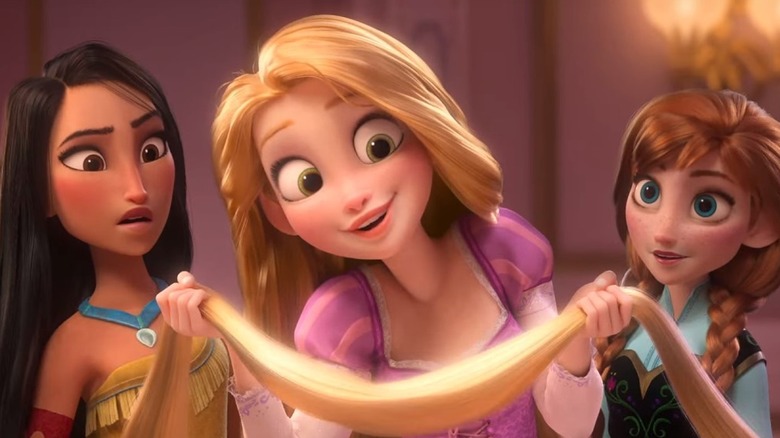Things Only Adults Notice About Disney Princesses
Disney princesses are pop culture powerhouses, and the glittering group encompasses a wide variety of traits. Mulan and Merida are warriors defined by their willingness to break with traditional femininity, Snow White is a beacon of kindness and patience, Tiana is a visionary chef and a persistent pragmatist, and Moana and Rapunzel long to explore the world on their own terms. These heroines span decades, animation styles, studios, and mythic origins. And yet somehow, they've cohered into a singular group that billions of people recognize on sight.
For so many of us, love of the Disney princesses begins in childhood. But watching Tangled or Sleeping Beauty as a grown-up is a very different experience than doing so as a kid. Adults can't help but recall alternate versions of Mulan's story they've heard as they watch her battle Shan Yu, and they might even remember the days in which a surprising character was part of the official Princess line. These are those Disney princess details only adults notice, from bloody origins to corporate controversy.
Belle and the Beast are on the French Revolution's chopping block
Pinning down Beauty and the Beast's time frame is difficult. It falls into that broad fairy tale category of "1700s-ish," when the gowns still require hoop skirts but knights in plate armor aren't so much a thing. However, Luke Evans, who plays Gaston in 2017's Beauty and the Beast, narrowed the era down considerably in an interview with Entertainment Weekly, saying, "When [Gaston] was about 16, he protected the town from a pack of Portuguese marauders in 1740."
Based on this assertion, we can assume Beauty and the Beast takes place in the 1750s, perhaps as late as 1760. The reign of Louis XV serves as solid backdrop for this beloved romance to play out against ... until one remembers the French Revolution began in 1789. Belle and the Beast have until middle age to enjoy their luxurious life — after that, things get dicey for couples in castles.
Yet their grisly fate isn't set in stone. In 2020, Disney kicked off The Queen's Council, a new line of historical novels that intertwine their heroines' stories and actual history. Rebel Rose, the first book in the series, locates Belle in 1789. She's just freed the Beast from his spell, but the Revolution is nearing their fabulous doorstep, and she finds herself "torn between her roots as a commoner and her future as a royal." Someone better teach Lumiere the words to "La Marseillaise."
The real John Smith might've made up Pocahontas' rescue
Kids are easily swept up in Pocahontas' jewel-toned vision of conflict, harmony, and sentient willow trees — not to mention "Colors of the Wind," one of the best Disney songs ever written. But adults are a whole lot more likely to know just how vastly Disney's version differs from the actual history that it's based upon.
First off, the woman known as Pocahontas wasn't actually named Pocahontas. She was named Amonute and also called Matoaka. "Pocahontas" was a nickname meaning "little wanton," for her mischievous nature. And she was indeed little. Pocahontas was roughly 11 or 12 when she rescued John Smith. Even that rescue is in doubt, however, as some historians suggest Smith lifted the tale entirely from a popular ballad.
Pocahontas was later kidnapped by an English colonist and used as a bargaining chip during the First Anglo-Powhatan War. She was eventually taken to another English settlement, where she converted to Christianity, took the name Rebecca, and accepted a marriage proposal from John Rolfe. Though this marriage ensured a ceasing of hostilities known as the "Peace of Pocahontas," the woman herself died in England only a handful of years after her marriage, at the age of 21. Disney isn't the first to refashion her story for their own purposes, and they won't be the last, but the truth of her life remains regardless.
Mulan meets an unfortunate fate in some versions of her tale
Mulan's story is one of absolute bravery. Despite the fact that she's a woman, despite her lack of training, despite her insecurities, she goes to war in her father's place. Her courage sustains her through these trials, which end in the hardest one of all — facing her father. But he embraces her upon her return. Her bravery isn't womanly, but that doesn't matter any longer — it's granted her the sort of honor that transcends gender roles.
Not every rendition of Mulan's tale follows this path, however. Those familiar with her folktale, which dates back to the 5th century, know that it has conveyed many different messages and morals over the years — including a few that fans of the movie might find disconcerting. Chu Renhuo, author of the late-17th century Romance of Sui and Tang, depicts Mulan as a virtuous warrior, one who becomes a sworn sister to the benighted Princess Xianniang. Tragically, the respect she earns while posing as a man evaporates upon the revelation of her womanhood. Rather than be forced into concubinage, she slits her own throat over her father's grave. This is but one of many versions of Mulan's story, shaped by a context few modern readers recognize. But it lingers, known to certain adults and very few children who are able to marvel with unique insight at just how much one story can change over the course of centuries.
If you or someone you know is struggling or in crisis, help is available. Call or text 988 or chat 988lifeline.org
'Disney princesses' weren't a thing until 2000
Once upon a time, there was no such thing as a Disney princess. Now, there were princesses in Disney movies, but the concept of Disney princesses as a distinct pantheon didn't yet exist. It wasn't until Andy Mooney, a former Nike executive, was put in charge of Disney's struggling consumer products division in 2000 that the Disney Princess brand took shape. Having noticed a plethora of girls at a Disney on Ice show wearing homemade costumes, he realized the wealth of affection that existed for Snow White, Ariel, Belle, and the rest of the royal cohort — and how lucrative it might be.
Though the Disney Princess line might seem to be an immovable part of the media landscape to little ones, those who remember the pre-Princess era can recall its absence — and then, it's sudden omnipresence. Sure, you could find Belle bedsheets and Ariel dolls prior to the line's creation, but you couldn't walk into a big box store and find Disney Princess-branded notebooks, alarm clocks, fruit snacks, bandages, lip balm, paper plates, and just about everything else. Disney Princess was launched with little marketing and no focus group research. As Mooney reflected in later years, "We simply gave girls what they wanted." So ardently do girls want it, in fact, that the brand raked in an unheard-of $1 billion in sales in the first three years of its existence. Now that's a happily-ever-after.
Tiana is based off one of the most important chefs in American history
The Princess and the Frog is unique among Disney movies in that it has a specific, real-world setting: New Orleans, 1928. Granted, there are a few liberties taken — Prince Naveen hails from the fictional nation of Maldonia, after all — but by and large, Tiana lives in the world as we know it. Her life is, in fact, girded by major events and historical currents we feel to this day. World War I took her father from her, "sugar barons" and "cotton kings" dominate her Louisiana, and businessmen dismiss her ambitions, since a "little woman of [her] ... background" is "better off where [she's] at."
Happily, Tiana triumphs over naysayers and tragedy, and even her success is historically rooted. Tiana was inspired by Leah Chase, a legendary chef known as the "Queen of Creole Cuisine." Her restaurant, Dooky Chase, is an American landmark. It became a major gathering place for the Civil Rights Movement, a dazzling art gallery, and of course, a celebrated beacon of Creole cooking. Dooky Chase has served leaders and luminaries ranging from Barack Obama to Ray Charles, who even mentions the locale in "Early Morning Blues." Chase, who was delighted to serve as the inspiration for Tiana, passed away in 2019 at the age of 96. Her legacy lives on in her restaurant, the hallowed halls of the Smithsonian, and The Princess and the Frog.
Not every Disney princess is an actual princess
What is a Disney princess? "Easy," a kid might reply, "a princess from a Disney movie." Sure, things can get a bit fuzzy — Moana is defined more by being a chief-in-training than the daughter of a chief, which is already pushing it — but the descriptor generally holds ... until one remembers Mulan. An inveterate commoner, albeit one of great distinction, Mulan is not, by even the most generous definition, a princess. Moreover, consider this. Neither Elsa nor Anna from Frozen are considered official Disney princesses. Even if we allow for Elsa's exclusion, given her queenship, we have no explanation for Anna's absence.
What makes a Disney princess is, in reality, a question with no real answer. The literal definition of princess has never mattered much. As grown-ups of a certain age might recall, Mulan has been part of the line from the very beginning, as was Tinker Bell, until she was removed to lead the Disney Fairies franchise. Anna and Elsa's position has also grown murkier in recent years. Their inclusion in Ralph Breaks the Internet's princess-centric scenes can be taken as proof that they're in the group, yet they remain absent from the official Disney Princess website. They exist on the outskirts of the Disney Princess clique, close enough to see it but firmly outside its walls. But hey — at least the cold never bothered them anyway.
Until recently, Disney princesses never made eye contact
Believe it or not, many within Disney didn't welcome the idea of the Disney Princess line. Roy E. Disney, Walt Disney's nephew and a longtime executive of the company, was among the most outspoken critics of the franchise. He believed that "having the princesses gang together would destroy their individual mythology and therefore the value of their films." This had been the prevailing wisdom for years — an Ariel doll and a Jasmine doll were, once upon a time, very clearly marketed as Little Mermaid and Aladdin toys, respectively. The movies, Disney and those of like minds believed, were the core of the company and couldn't be muddled.
As is now obvious, the Disney Princess idea prevailed, and it went on to earn billions. But this criticism made its mark in certain rules that were established for the franchise. Each princess is distinguished by a signature color, meaning that Aurora's infamously color-changing dress was made to settle on pink, so as not to compete with Cinderella. Most prominently, it was agreed that the princesses should never make eye contact. When assembled on backpacks, cereal boxes, and posters, they give no indication of existing on the same plane as the princess beside them. One must assume this rule is no longer strictly observed, given Ralph Breaks the Internet's scenes of intra-franchise princess fraternization.
New princesses get real-world coronations in actual castles
Disney royals are often crowned within their own movies. Frozen kicks off its story with Elsa's coronation, Rapunzel realizes her own identity upon donning her stolen tiara, and Moana closes out her story by taking her place as chief of Motunui. But as it turns out, Disney princesses are often crowned within the real world as well — and sometimes in actual palaces.
Tiana, the first new member to be added to the Disney Princess line-up, was crowned in 2010, in a lavish ceremony at the New York Palace, a luxury hotel and historic landmark located on Madison Avenue. Luminaries including Audra McDonald and Tina Fey were in attendance, in addition to every other Disney princess and a gaggle of very lucky little girls. Rapunzel hopped across the pond for her coronation, which took place at London's Kensington Palace. A whole host of similar events have taken place within the Disney parks, some honoring Disney heroines who aren't officially part of the Disney Princess line. For example, Anna and Elsa, as well as Elena from Disney's Elena of Avalor series, have all enjoyed fetes, parades, and "royal welcome" ceremonies full of fabulous costumes, horse-drawn carriages, and a whole lot of trumpet-blowing.
You can hang out with the princesses in the Disney parks — but it'll cost you
Ideally, a trip to a Disney park should feel utterly and effortlessly magical. The passion these destinations inspire in their legions of devotees proves that a whole lot of the time, Disney manages to accomplish this feat. But the game is entirely changed when it comes to princess-centric park events.
Now, meeting the princesses is eminently doable. They're placed all over the park, available for photos, autographs, and tearful confessions of childhood love. But affairs like Cinderella's Royal Table — a luxurious meal held in Disney World's iconic Cinderella Castle, featuring appearances from the princesses themselves — are a whole lot harder to attend. Thousands of posts, articles, and blogs exist that aim to help parkgoers, often adults eager to dazzle their children, wrangle a reservation. According to one intrepid mom, Cinderella's Royal Table requires an aspiring dinner guest call exactly 180 days prior to the desired date, at precisely 7 AM. However, not even that is foolproof, and some gurus suggest making multiple reservations, lest one time become untenable. This sort of hoarding is controversial, but when it comes to making the magic happen for little ones, most parents are willing to get unscrupulous.
Disney Princess merchandise isn't just for the little ones
The world of Disney Princess merchandise is vast and ever-expanding. Even the richest kid in the world couldn't hope to own every single Princess-branded item pushed out into the ravening marketplace, and that's only counting the stuff explicitly meant for kids. While most Disney Princess merch is indeed for children, there's a whole wide world of products featuring Tiana, Rapunzel, and the rest of the gang that's squarely aimed at grown-ups.
Considering tying the knot? You can put a Disney Princess engagement ring on it, then walk down the aisle in a Disney Princess wedding dress. Want to keep the Disney spirit alive as you eat? You can buy a 16-piece dinnerware set inspired by your heroine of choice. Looking to primp in princess style? Prepare to drop a few hundred bucks on some Disney Princess-branded makeup. Want to liven up boring, grown-up tasks like meal planning and bill payment? Keep track of everything in an official Disney Princess planner. Let the little ones have their plastic jewelry — a princess-loving adult can spend their hard-earned hundreds on literal diamonds.
An all-princess movie is possible
Picture this — a brave band of heroes from a variety of different movies, all made by Disney, gathered together to fight evil in one blockbuster film. Are we talking about the Avengers? Close, but no. We're talking about a movie bringing together every Disney princess. Once, such an idea was absurd, but in the era of the cinematic universe, all things are possible, especially since this is also the era in which Ralph Breaks the Internet's princess scene made it clear just how much people might love seeing Merida, Aurora, and Mulan interact on-screen.
Though the princesses take up little of the film's runtime, they made a huge impact. Multiple news items dissecting, discussing, and celebrating the scene sprung up in the movie's wake, a boatload of merchandise of the princesses in their loungewear was released, and discussion of a pan-princess movie began. And these aren't just idle fan rumors. Ralph directors Phil Johnston and Rich Moore have considered the possibility themselves. In an interview with The A.V. Club, Moore called it "an idea worth exploring," revealing that no matter where the movie played, "fans [were] off the charts" about the princess scene. Though they noted that they have no idea if this is an idea Disney is considering, the fact that they repeatedly emphasized fans' love of "seeing the princesses do what you always believed they could do" is enough to pique some serious fan interest.
